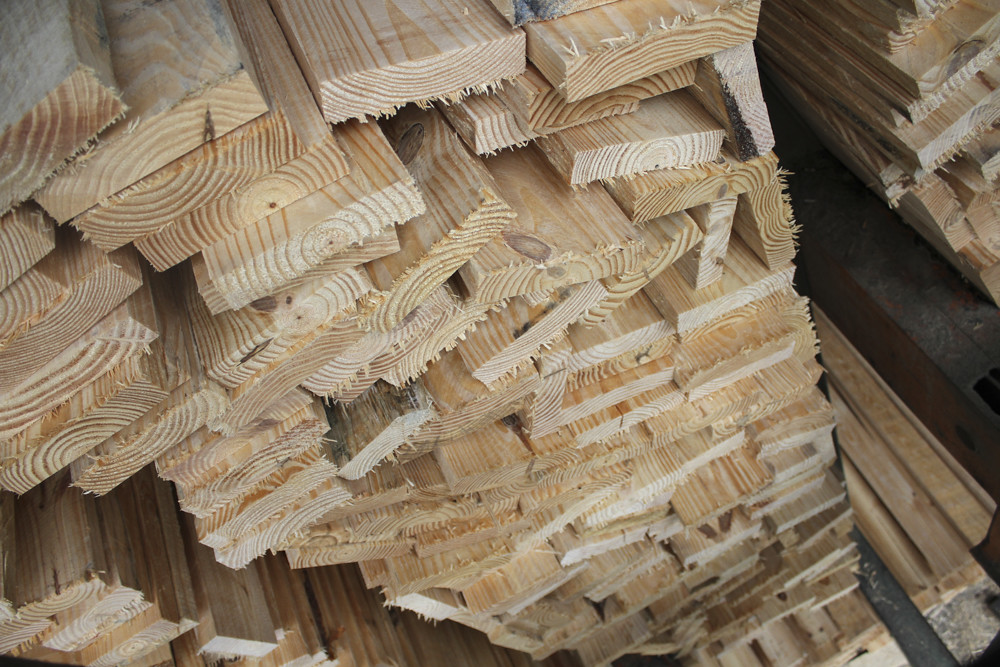Reference: Southern Perspective – Southern Group of State Foresters

You’ve seen it all over the news for months now – the shortage and ever-escalating price of lumber amid the housing boom. According to the National Association of Home Builders, lumber prices have more than tripled since April of last year. This boom has clearly created profit opportunities for sawmills and lumber dealers, but it has not, so far, had a similar impact on forest owners who grow the trees that ultimately make those in-demand lumber products.
How did we get here?
Call it a perfect storm of pandemic panic and a general unpredictability of the world at large – several factors converged to yield skyrocketing lumber prices over the last year, specifically in softwoods like southern yellow pine. Like most industries at the start of the COVID-19 pandemic, the lumber industry came to a startling halt amid a general wave of uncertainty. Sawmills experienced shutdowns, housing construction plummeted, lumber dealers liquidated their inventory and speculators shorted lumber futures. The expectation was that the lumber industry would sit tight within that slump – so there was little impetus to churn out new lumber supply.
Shortly after the first lockdowns in June 2020, however, quarantined homeowners surprised the industry by curing their “cabin fever” with home building and renovation projects. The unexpected shift from slump to boom, combined with the early pandemic shutdowns, created a unique environment where demand has continued to outweigh supply. Lumber mills have not been able to churn product out fast enough, resulting in a persistent rise in lumber prices.
Why Aren’t Southern Forest Owners Benefitting?
Although the market for lumber (processed wood products like two-by-fours, plywood, etc.) typically aligns with market trends for timber (the trees harvested to make the products), the two markets have officially diverged. Proudly, forests in the South are abundant with trees – but this abundance has meant that there are more trees than the sawmills need to buy, even right now. Simply put, the supply of unharvested trees far outweighs the demand from sawmills.
Compounding this challenge is the fact that many forest owners, who participated in federal tree planting cost-share programs in the 1980s, now have mature trees that are ready to be harvested for wood products. This added influx of ready-for-harvest trees, on top of an already abundant supply, has driven stumpage prices down even further.
How Can Southern Forest Owners Address Excess Timber Supply Issues?
Although we will never complain that the South has abundant and healthy forests, it is important to support the economic needs of our southern forest owners. Logically, forests that yield profit for their owners are less at-risk of being converted to other non-forest uses like urban development. By acknowledging these challenges and helping forest owners navigate available markets while managing for sustainability, we can help landowners keep their forests economically viable and intact. So, how can forest owners make the most of the trees on their property and what does the future look like for timber sales?
According to Forest Economic Advisors LLC, the United States has increased its lumber-making capacity by about 11% over the last five years. Although lumber companies haven’t shown much interest in hurriedly building more mills in answer to increased demand, some movement to increase output capacity and a few new mills are in the works. West Fraser has said that they will invest about $150 million at five of their southern lumber mills while Weyerhaeuser Corporation is set to invest $157 million to upgrade a Louisiana facility. Additionally, newer mills in the southern region between Georgia and east Texas have helped offset mill closures in Canada, while four new large mills are coming to the South with some previously idle facilities in Florida and Mississippi coming back online. Another potentially hopeful thought for forest owners is that the booming domestic lumber market has caught the eye of forest product manufacturers from around the world. It is expected that existing mill expansions alongside new greenfield facilities will infuse the southern region with about 2 billion board feet of production over the next year.
Another option for forest owners, eager to be paid for their trees, is participation in carbon markets. Forest carbon markets are an increasingly popular concept in which businesses like Microsoft, Delta, Alphabet and Disney pay landowners to make management choices that increase the amount of carbon storage on their land as a way of offsetting the company’s CO2 emissions. Currently, companies like Silviterra and Finite Carbon, and programs like the Family Forest Carbon Program from The Nature Conservancy and American Forest Foundation, are working to expand carbon market access to forest owners with smaller acreages and to provide these groups with less constricting, short-term contracts. In some cases, these groups are offering landowners carbon offset contracts for an average on $10-$15 per metric ton. To find out if a carbon offset contract might make sense as part of your forest management planning, contact your local state forestry office to speak with a forester who specializes in forest services, utilization and marketing.
Although the domestic lumber and timber markets continue to keep everyone guessing, the Southern Group of State Foresters and its member agencies are keeping a keen eye on trends so that we may best serve our southern forest landowner base to keep forests healthy and abundant into the future. For more information about forest products, services and carbon markets, visit SouthernForests.org.
